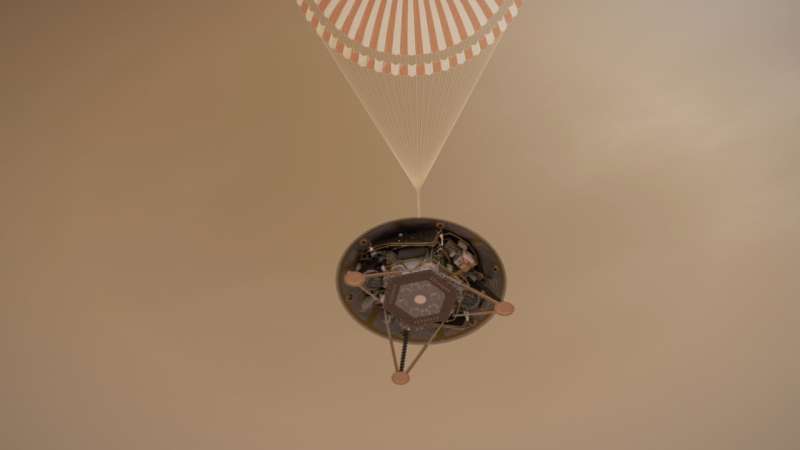NASA InSight landing on Mars: Milestones

On Nov. 26, NASA's InSight spacecraft will blaze through the Martian atmosphere and attempt to set a lander gently on the surface of the Red Planet in less time than it takes to hard-boil an egg. InSight's entry, descent and landing (EDL) team, based at NASA's Jet Propulsion Laboratory in Pasadena, California, along with another part of the team at Lockheed Martin Space in Denver, have pre-programmed the spacecraft to perform a specific sequence of activities to make this possible.
The following is a list of expected milestones for the spacecraft, assuming all proceeds exactly as planned and engineers make no final changes the morning of landing day. Some milestones will be known quickly only if the experimental Mars Cube One (MarCO) spacecraft are providing a reliable communications relay from InSight back to Earth. The primary communications path for InSight engineering data during the landing process is through NASA's Mars Reconnaissance Orbiter and Mars Odyssey. Those data are expected to become available several hours after landing.
If all goes well, MarCO may take a few seconds to receive and format the data before sending it back to Earth at the speed of light. The one-way time for a signal to reach Earth from Mars is eight minutes and seven seconds on Nov. 26. Times listed below are in Earth Receive Time, or the time JPL Mission Control may receive the signals relating to these activities.
- 11:40 a.m. PST (2:40 p.m. EST) - Separation from the cruise stage that carried the mission to Mars
- 11:41 a.m. PST (2:41 p.m. EST) - Turn to orient the spacecraft properly for atmospheric entry
- 11:47 a.m. PST (2:47 p.m. EST) - Atmospheric entry at about 12,300 mph (19,800 kph), beginning the entry, descent and landing phase
- 11:49 a.m. PST (2:49 p.m. EST) - Peak heating of the protective heat shield reaches about 2,700°F (about 1,500°C)
- 15 seconds later—Peak deceleration, with the intense heating causing possible temporary dropouts in radio signals
- 11:51 a.m. PST (2:51 p.m. EST) - Parachute deployment
- 15 seconds later—Separation from the heat shield
- 10 seconds later—Deployment of the lander's three legs
- 11:52 a.m. PST (2:52 p.m. EST) - Activation of the radar that will sense the distance to the ground
- 11:53 a.m. PST (2:53 p.m. EST) - First acquisition of the radar signal
- 20 seconds later—Separation from the back shell and parachute
- 0.5 second later—The retrorockets, or descent engines, begin firing
- 2.5 seconds later—Start of the "gravity turn" to get the lander into the proper orientation for landing
- 22 seconds later—InSight begins slowing to a constant velocity (from 17 mph to a constant 5 mph, or from 27 kph to 8 kph) for its soft landing
- 11:54 a.m. PST (2:54 p.m. EST) - Expected touchdown on the surface of Mars
- 12:01 p.m. PST (3:01 p.m. EST) - "Beep" from InSight's X-band radio directly back to Earth, indicating InSight is alive and functioning on the surface of Mars
- No earlier than 12:04 p.m. PST (3:04 p.m. EST), but possibly the next day—First image from InSight on the surface of Mars
- No earlier than 5:35 p.m. PST (8:35 p.m. EST) - Confirmation from InSight via NASA's Mars Odyssey orbiter that InSight's solar arrays have deployed
More information: For the latest updates on InSight's status, visit: mars.nasa.gov/insight/timeline/landing/status/
Provided by NASA





















